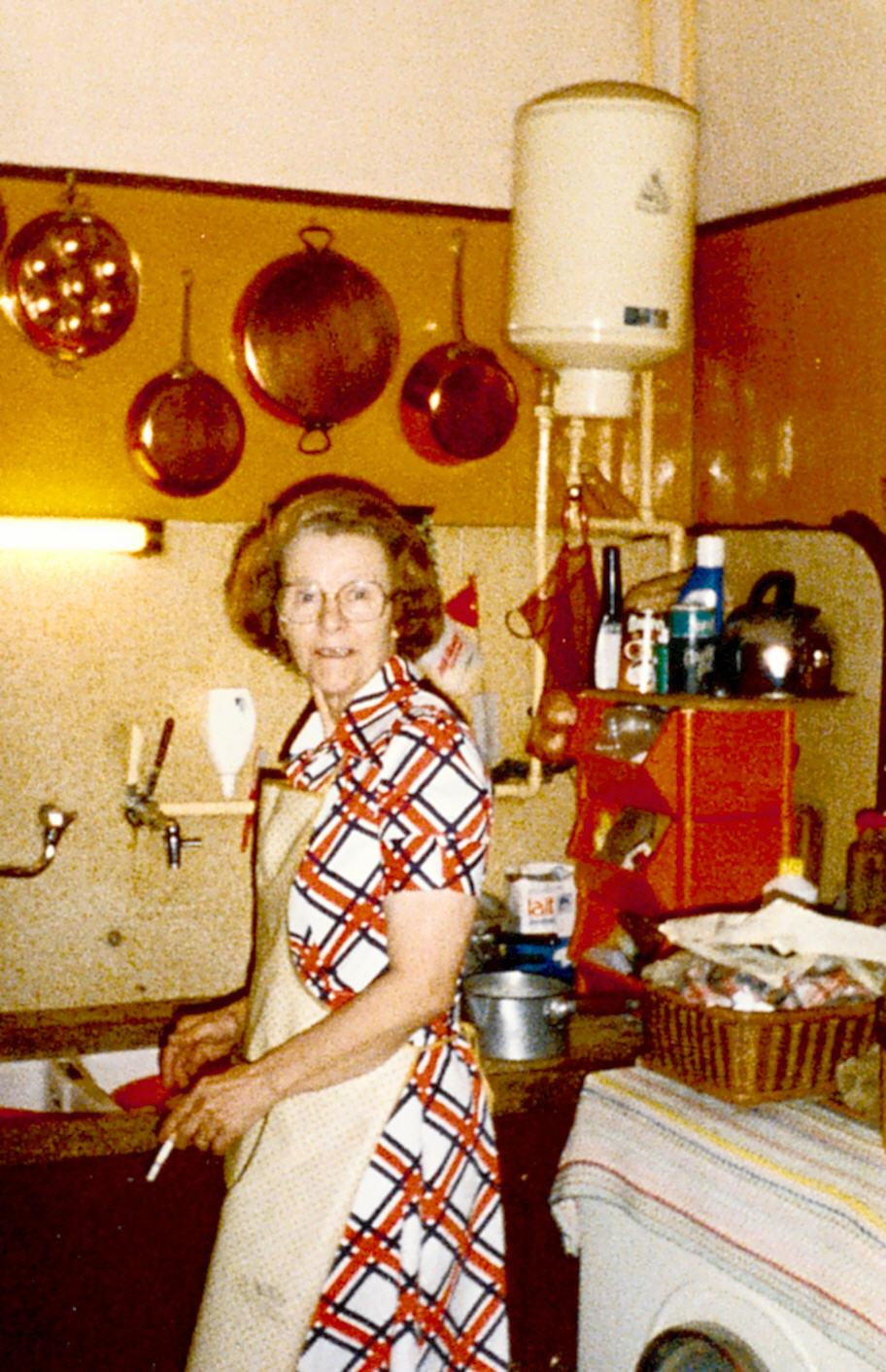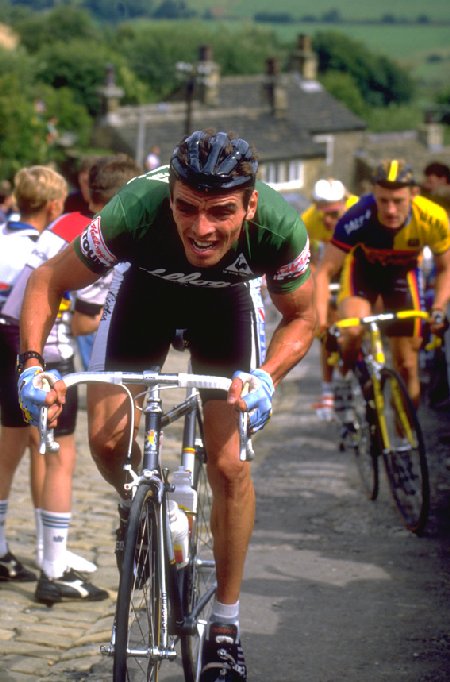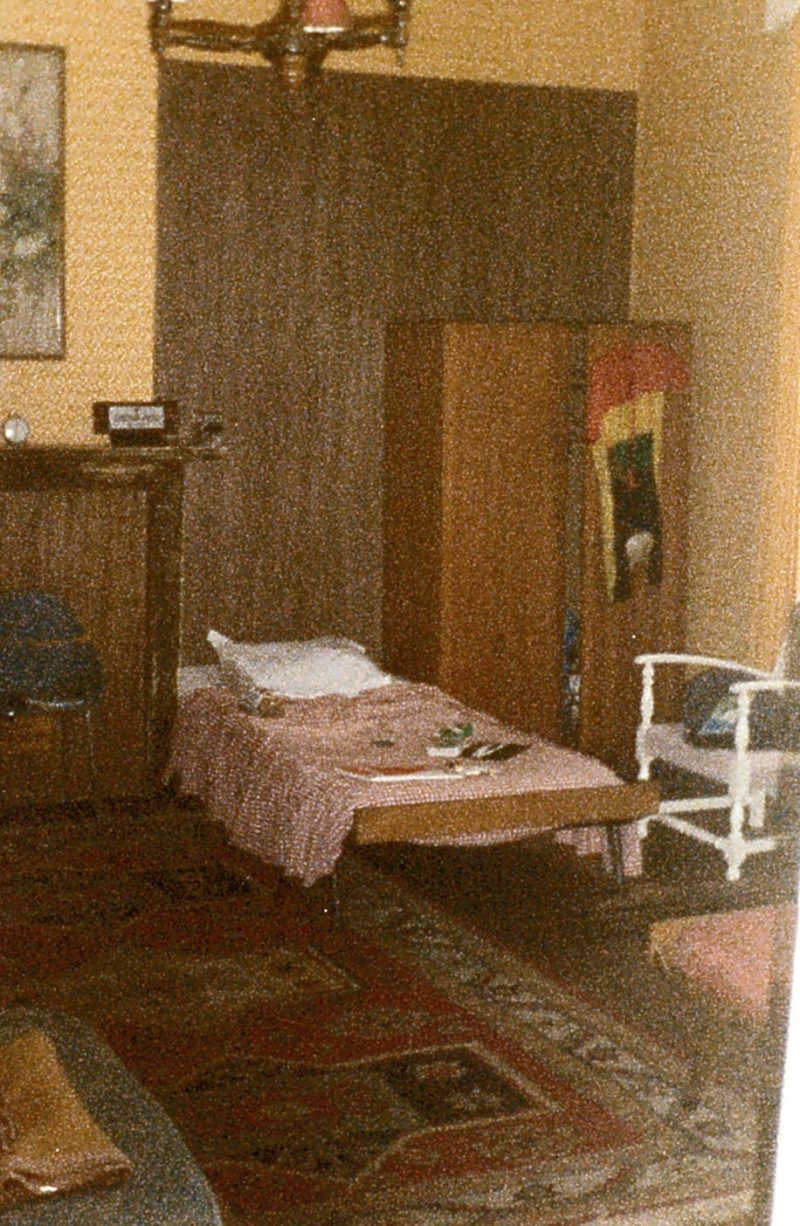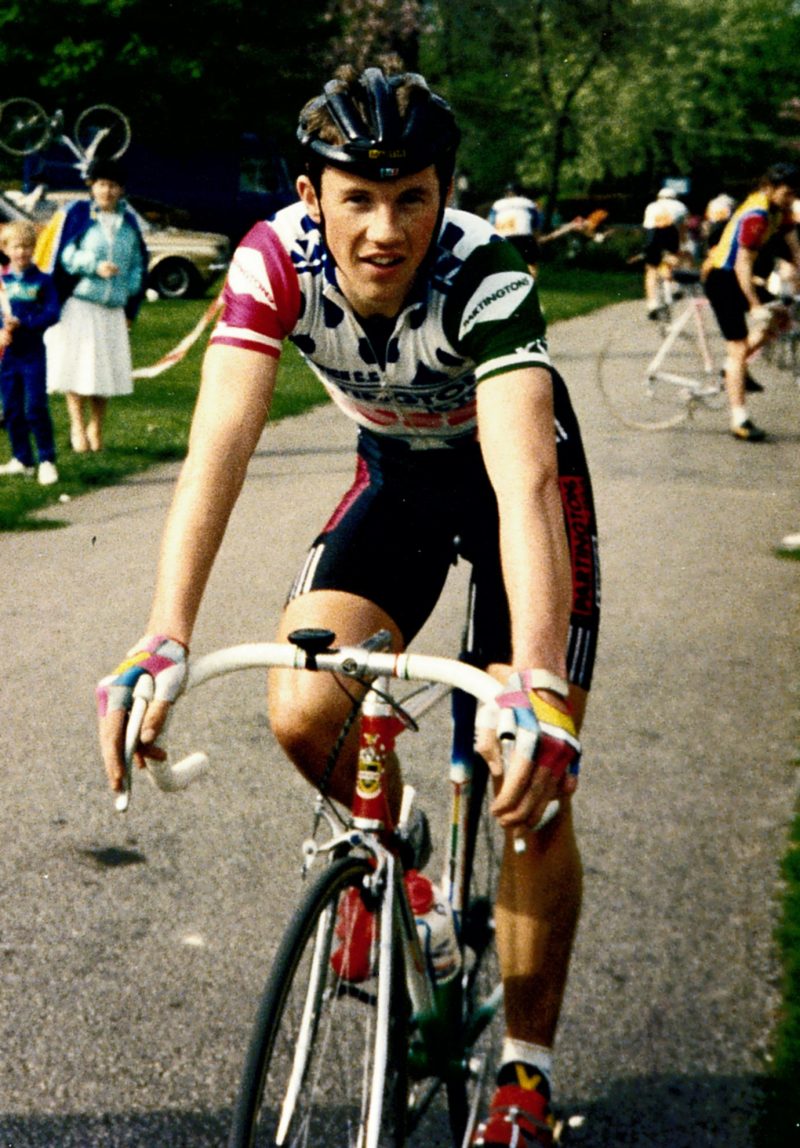Giving It A Go In Belgium; In part four of our (irregular) series on racing as an amateur in Belgium, VeloVeritas own web manager and editor, Martin, talks about when he had some time in the mid-80’s between completing a college course and starting a new job, and decided to head off to Flanders for the season…
I had nothing to do between April and October, so I borrowed £250 from my brother, gathered my bike, kit, and a spare pair of wheels together, and jumped on a train to London. Another train to Dover, the overnight ferry to Ostende, a third train to Ghent, and a bus trip to Zomergem, saw me traipsing around in the sunshine after a full 24 hours travelling, dog-tired, with no idea where I was going. I did have a slip of paper in my pocket though, that my friend Fraser Nicholson had given me — on it was the address of a Welsh lady called Mrs Deene.

Mrs Deene had married a Flandrian chap called George during the war, and had lived in Belgian ever since. For many years, she had run a “cyclists’ lodge”, initially in Ghent then later in Zomergem, which guys could use as a base whilst racing over there.
The Deene’s house was a great arrangement – for a very modest sum, you got a bed, breakfast and evening meal (if you wanted it), and even a lunch-bag if you asked nicely.
There was a guest book which riders signed when they lodged there, crammed full of famous names.
I used to spend ages flicking through it and seeing who else the Deene’s had looked after; Barry Hoban, Alexi Grewal, to name just two.
There is some kind of racing on every day in Flanders, and I would sit down with George before breakfast and pour over that morning’s Het Volk newspaper, which listed all the races in the territory that day.
George would tell me which races were the closest, and which had the best money.
I’d have my breakfast, strap my good wheels onto my wheel carriers and handlebars, get the rucksack on, and ride out to it.

The races were often 20 or 30 miles away, and would usually be kermis’s of perhaps 60 or 70 miles.
Now and again you were able to wrangle a start in an Inter-Club race or amateur classic like the Ronde.
Then of course, car-less, I’d have to ride home again afterwards, often in the darkness.
The money was pretty good — there was cash prizes for the top 20 — sometimes 30 — places, and so I found that if I could place in the top 20 just twice a week, from maybe five starts, that was my digs and spending money sorted.
You can race pretty much every day if you want to, but I used to race for two or three days in a row, then have a day or two off to recover, and to do some specific training if I could be bothered.
It was a fantastic way to get into great shape, and for a large part of the time I stayed with the Deene’s, I shared a room with top guys such as the ANC pro’s Joey McLoughlin and Phil Thomas, who would come over for two or three week blocks to ride as much as possible, building form for the televised “Kellogg’s” races in the UK.

Sometimes on my day off I would go out to their race with them, to help out.
I remember handing up bottles to them and to Danny Clark, who was at the top of his game on the track in the Six Day races at the time.
Mrs Deene wanted the best for her guests, and perhaps to save the riders from themselves, she operated an 11pm curfew; Joey usually had to get me to unlock the door for him after the pub across the street closed!
Getting a start was easy — once you arrived, you just had to find out which café the organisers were in, wait your turn in the queue, and in exchange for a quick flash of your International Racing Licence and a couple of quid, they gave you your race number. No bike checks or anything like that.
After that, you just headed outside — in fact, the place was usually so filled with cigarette smoke that you ran back outside, and knocked on a house door nearby. You didn’t even have to explain why, you were invited inside, offered a drink, and a room to get changed in and to leave your stuff.

The racing was a shock at first, and not exactly what I was used to. It wasn’t just that the entire race was one-big-sprint, as races in Scotland tended to be ‘bun-fights’ with attacks from the gun, but it was the fact that there were often 200 guys riding – remember this would usually be midweek; these riders were all full-time, aspiring-to-be-pro’s, or they at least they maintained a pretence that they had full-time jobs.
There would be loads of riders going up the road, one-by-one on either side, then joining up, being brought back, and then more going, all the time; attack after attack.
The races were always so fluid, that you really had to keep your wits about you, or you easily missed the winning move. I was always struck by how strong these guys were, how they could “sit in the 12” all day, but looking back, I can see now why they might have been able to do that. I was pretty naive back then.
My season was cut short in early September, riding in the pouring rain in a kermis which — like they usually did at some point — took us up a road which was barely more than a farm track, cobbled, with a smoother drainage slab at each side.
The riders of course filed into two columns on these slabs. I was at the front of one of these columns, but saw that the string on the other side of the track was splitting and the front five or six guys were moving clear.
Brain out, fear of missing the move, I attempted to switch sides, with the inevitable result.
I just remember that the ambulance was the first vehicle following the race – it was even in front of the commissaire’s car — and just as well too!
Happy days. The only trouble is, when my brother reads this and remembers, he’ll want his £250 back!



